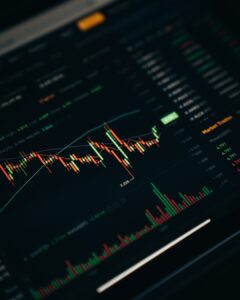Forex liquidity zones play a crucial role in identifying better trading opportunities in the dynamic and ever-changing foreign exchange market. As a forex trader, understanding liquidity zones can provide valuable insights into market behavior, enabling you to make more informed trading decisions. In this article, we will explore what forex liquidity zones are, why they are important, and how to identify them effectively.
Forex liquidity refers to the ease with which a currency pair can be bought or sold without significantly impacting its price. It represents the depth of the market and the volume of transactions taking place. Liquidity is influenced by various factors, including the trading volume, the number of market participants, and the time of day.
Identifying liquidity zones is essential because they often coincide with areas of increased trading activity and potential price movements. These zones can serve as support and resistance levels, offering traders valuable information about potential entry and exit points for their trades.
One of the most effective ways to identify forex liquidity zones is by analyzing the trading volume. Volume is a key indicator of market activity and can provide insights into the supply and demand dynamics. Higher volumes are usually associated with increased liquidity and the presence of more market participants actively trading a particular currency pair.
There are several tools and indicators that traders can use to analyze volume and identify liquidity zones. One popular indicator is the Volume Weighted Average Price (VWAP), which calculates the average price of a currency pair weighted by its trading volume over a given period. The VWAP can help identify areas of high trading activity and act as a potential liquidity zone.
Another useful tool is the Accumulation Distribution Line (ADL), which combines volume and price action to assess the buying and selling pressure in the market. By plotting the ADL on a price chart, traders can identify areas where the volume is accumulating or distributing, indicating potential liquidity zones.
In addition to volume analysis, traders can also look for liquidity zones based on price action patterns. Support and resistance levels are areas where the price has historically struggled to move beyond, often due to increased buying or selling pressure. These levels can act as liquidity zones as traders tend to place their orders around these areas, leading to increased trading activity.
To identify support and resistance levels, traders can use various technical analysis tools, such as trendlines, moving averages, and Fibonacci retracement levels. By analyzing price action and identifying areas where the price has previously reversed or stalled, traders can pinpoint potential liquidity zones for trading opportunities.
It is important to note that liquidity zones can vary depending on the time of day. The forex market operates 24 hours a day, and different trading sessions overlap, resulting in varying levels of liquidity. The major trading sessions, such as the London, New York, and Tokyo sessions, typically have higher liquidity compared to the Asian or European sessions. Understanding the market’s liquidity dynamics during different trading sessions is crucial for identifying the most favorable trading opportunities.
In conclusion, forex liquidity zones are key areas of increased trading activity and potential price movements. By analyzing volume, price action, and understanding the market’s liquidity dynamics, traders can effectively identify these zones and make more informed trading decisions. Utilizing tools such as the VWAP, ADL, and technical analysis can significantly enhance a trader’s ability to identify liquidity zones and capitalize on better trading opportunities in the forex market.





